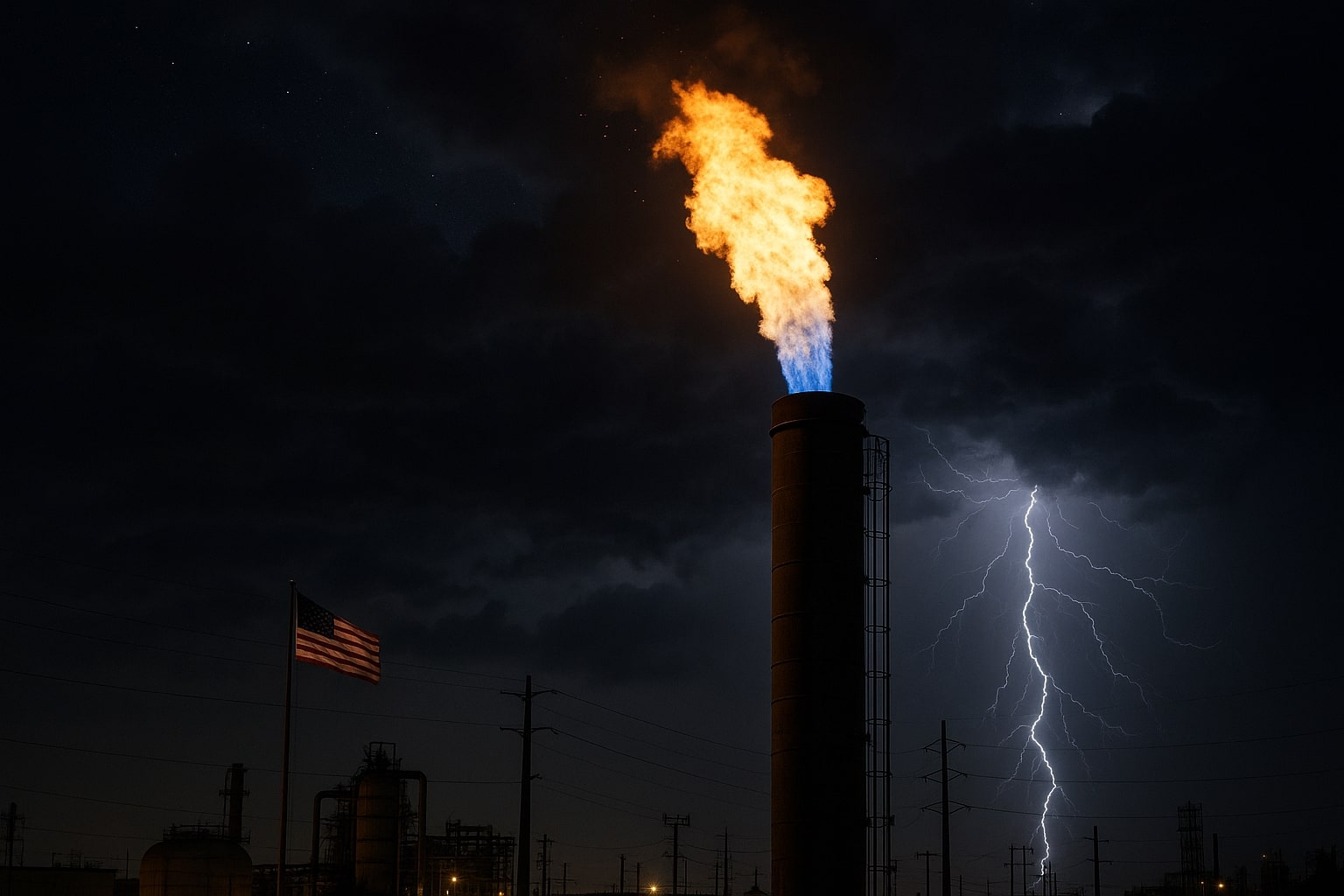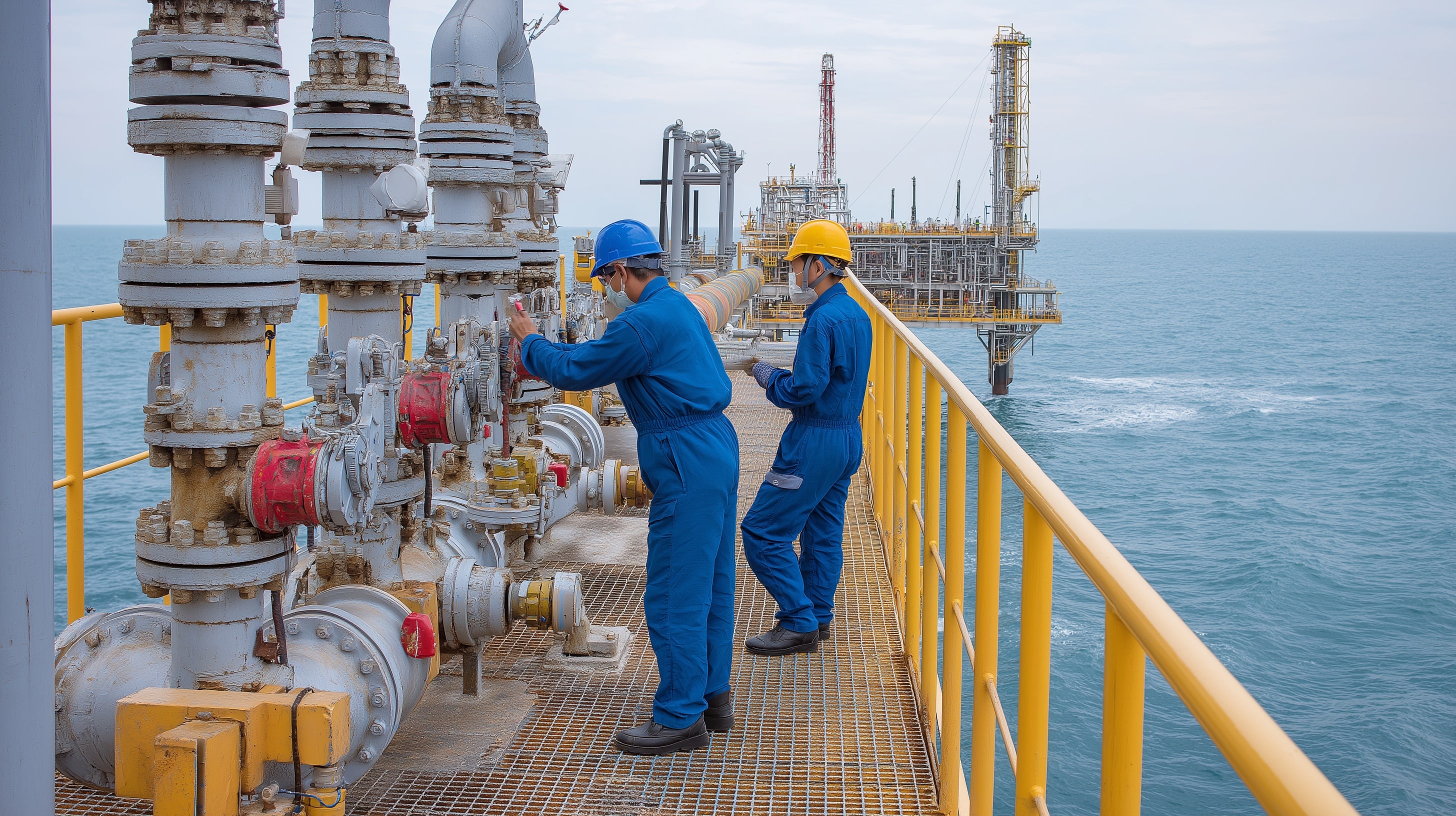
Natural Gas Price Forecast (NG=F) Slips to $3.32 as Supply Surge and October Warmth Pressure Prices
EIA reports +53 Bcf injection below average, but record 108.4 Bcf/d output and 82% EU storage limit gains; key pivot $3.53–$3.58 decides next trend | That's TradingNEWS
Natural Gas (NG=F) Retreats to $3.32 as Warm Weather, Record Output, and LNG Overhang Test Bullish Momentum
Natural Gas futures (NG=F) pulled back sharply to $3.324 per MMBtu, down nearly 1.86% on the week, snapping a seven-session winning streak and erasing part of last week’s 3.68% gain. Despite an early rally to $3.585, the contract reversed lower as traders failed to sustain a breakout above the crucial $3.529 pivot.
Market sentiment turned defensive following fresh data showing U.S. Lower-48 dry gas output hitting 108.4 Bcf/d, up 5.4% year-over-year, while demand lagged at 66.4 Bcf/d, a steep 7.4% y/y drop. The imbalance highlights persistent oversupply just as autumn heating demand softens.
EIA Storage Miss Fails to Ignite Sustained Bullish Reaction
The EIA’s weekly storage report showed a +53 Bcf injection for the week ending September 26, sharply below both the five-year average of +85 Bcf and the market consensus of +64 Bcf. While the print was initially interpreted as bullish, driving prices briefly to $3.585, traders faded the rally quickly. Inventories now total 3,561 Bcf, 171 Bcf above the five-year mean but down from a surplus of 203 Bcf just a week earlier — indicating modest tightening but still comfortable supply.
European storage is also ample, with tanks 85% full versus the 90% five-year norm, capping global risk premiums. Even with the smaller U.S. build, fundamentals remain too loose to support an extended rally without colder weather or a supply disruption.
Mid-October Warmth Limits Early Heating Demand
Forecasts from Atmospheric G2 project a sustained warm pattern across the central and eastern United States between October 8–17, delaying the seasonal pickup in heating load. Traders note the critical Heating Degree Day (HDD) index will remain below the 10-year average through mid-month, cutting early-season consumption.
Electric power burn rose 5.96% year-over-year to 84,530 GWh for the week ended September 27, according to the Edison Electric Institute, yet this uptick in gas-fired generation hasn’t offset weaker residential and industrial use. The shortfall in weather-driven demand remains a structural drag, leaving NG=F exposed to further downside unless temperatures reverse or LNG exports accelerate.
Record U.S. Production Undercuts Market Balance
U.S. natural gas production is near historic highs, with Lower-48 output consistently topping 108 Bcf/d. The EIA recently revised its 2025 forecast higher by 0.2% to 106.63 Bcf/d, citing resilience in the Haynesville and Permian basins. Active gas rigs climbed to 118, just below the two-year peak of 124, according to Baker Hughes, marking a notable recovery from the 4.5-year low of 94 rigs in September 2024.
The oversupply problem is most acute in the Waha Hub of West Texas, where regional cash prices turned negative amid pipeline congestion. These bottlenecks, coupled with strong associated gas output from oil drilling, are forcing traders to discount regional supply even as Henry Hub benchmarks stabilize above $3.00.
Global Trade: Türkiye’s $43 Billion LNG Pact Signals Long-Term Demand Shift
Beyond the U.S. market, international LNG agreements are reshaping long-term demand flows. Türkiye recently signed $43 billion worth of U.S. LNG import contracts extending from 2027 to 2045, as part of a strategy to diversify supply and enhance cost efficiency. The deal — led by state-run BOTAS with Mercuria and Woodside Energy — secures nearly 70 billion cubic meters of U.S.-sourced LNG, roughly 4 Bcm annually, in addition to 5.8 Bcm starting in 2030.
This move strengthens U.S. LNG export visibility, providing structural support to NG=F futures through long-term demand commitments, even as near-term oversupply persists. It also cements the U.S. as Türkiye’s largest LNG partner and a cornerstone of Europe’s broader diversification away from Russian gas.
Read More
-
PFFA ETF Nears $21.50 as Rate Cuts and 9.49% Yield Spark Renewed Demand
29.11.2025 · TradingNEWS ArchiveStocks
-
XRPI and XRPR ETFs Ignite Ripple’s Institutional Rally as Inflows Near $1B and XRP Holds $2.20
29.11.2025 · TradingNEWS ArchiveCrypto
-
Natural Gas Price Forecast - NG=F Blasts to $4.85 as Demand Surge Fuel Multi-Month Breakout
29.11.2025 · TradingNEWS ArchiveCommodities
-
USD/JPY Price Forecast - Yen to Dollar Slides to 156.10 as Yen Strengthens on Fed Cut Expectations
29.11.2025 · TradingNEWS ArchiveForex
Malaysia’s Gas Infrastructure Expansion Reinforces Asian Demand Base
In Southeast Asia, Gas Malaysia Bhd (KL:GASMSIA) continues to expand its National Gas Distribution System (NGDS) by 240 km (+8.8%) to 2,946 km, while maintaining record profitability despite softer global prices. The company posted RM441.4 million (≈$93 million) in FY2024 net profit, up 15% YoY, even with benchmark prices averaging below $3.50.
Gas Malaysia’s green transition strategy — including 166,000 MMBtu of biomethane injection and plans to double that figure in 2025 — reflects the broader trend of utilities blending decarbonization with gas reliability. With Peninsular Malaysia’s demand rising in energy-intensive sectors, the region continues to underpin medium-term LNG consumption across Asia, providing baseline support for U.S. exports.
Technical Landscape: $3.063 Defines Floor, $3.585 Caps Resistance
From a technical perspective, Natural Gas (NG=F) is trading in a volatile sideways channel. The $3.063–$2.986 range forms critical support, while the $3.529–$3.585 zone remains key resistance. A decisive break above $3.585 would confirm trend continuation, opening a path toward $4.048 (52-week moving average).
Momentum indicators suggest fatigue: the RSI has rolled back to 52 from 63, and short-term moving averages are flattening near $3.40. However, a bounce above $3.53 could attract momentum buying, while failure to hold $3.06 risks a slide toward $2.85, where speculative longs are likely to defend positions.
Bernstein Highlights Scenarios for Sub-$3 Natural Gas
Analysts at Bernstein identified six key conditions that could drive U.S. natural gas back below $3 per MMBtu — four of which are already flashing amber. Warm winter weather remains the top risk: in 2012, mild conditions cut heating demand by 3 Bcf/d, collapsing prices to near $2.00. This year’s forecast lacks a strong El Niño cooling offset, hinting at similar dynamics.
Cheap coal is the second headwind, with lower coal prices diverting some power demand away from gas. Haynesville and Appalachia output growth add further supply pressure, while LNG demand softness in Asia could limit exports. Bernstein notes that if these elements align, Henry Hub prices could temporarily dip back toward $2.70–$2.80, though structural support remains intact.
European Pressure: High Inventories and Weak Asian Imports
European gas storage, currently 82.5% full, and softer Asian LNG demand — especially from China — continue to pressure global prices. The Dutch TTF benchmark dropped 1.3% to €31.04/MWh, down 4.4% week-on-week, as additional LNG cargoes redirected from Asia landed in Europe. This surplus environment keeps international price spreads narrow, constraining arbitrage opportunities and limiting upward momentum for NG=F futures despite bullish sentiment around future export growth.
Corporate and Regional Dynamics Add Structural Support
While spot prices remain constrained, corporate investment signals growing confidence in long-term demand. Turkish Energy Minister Alparslan Bayraktar confirmed new exploration plans across the Black Sea, Somalia, and potentially Libya, aiming to double domestic supply to 16 million households by 2028.
Malaysia’s GM32 plan, targeting 800 km of new pipeline expansion by 2028, and the steady ramp-up of biogas output underpin Asia’s growing reliance on natural gas during its decarbonization transition. Collectively, these investments reinforce the medium-term bullish base even as short-term oversupply dominates.
Market Balance and Global Implications
At the global level, LNG feedgas to U.S. export terminals stands at 15.7 Bcf/d, roughly flat week-on-week, yet the steady stream provides a crucial floor for prices. European and Asian markets remain oversupplied for now, but long-term contracts — such as Türkiye’s $43B deal — lock in sustained demand through the 2030s and 2040s.
Meanwhile, power generation’s 5.96% y/y growth rate reflects early-stage substitution from coal to gas in developing regions. Should this trend accelerate into Q4 2025, even mild weather might not fully offset the demand pickup from electricity markets and industrial restarts.
Verdict: NG=F — HOLD with Downside Risk to $3.00, Upside Potential Above $3.60
Natural Gas remains caught between record domestic supply and emerging long-term global demand. The next major catalyst lies in weather evolution and potential LNG shipping bottlenecks heading into November.
At $3.32, the market sits mid-range, with short-term bias neutral-to-bearish until $3.585 breaks. A confirmed breakout above that threshold could trigger momentum toward $4.00–$4.05, while failure to defend $3.06 risks a slide below $3.00.
Given the balance of record output, stable exports, and geopolitical LNG expansion, NG=F is rated HOLD — awaiting either a decisive technical breakout or a seasonal demand inflection to validate bullish positioning.



















